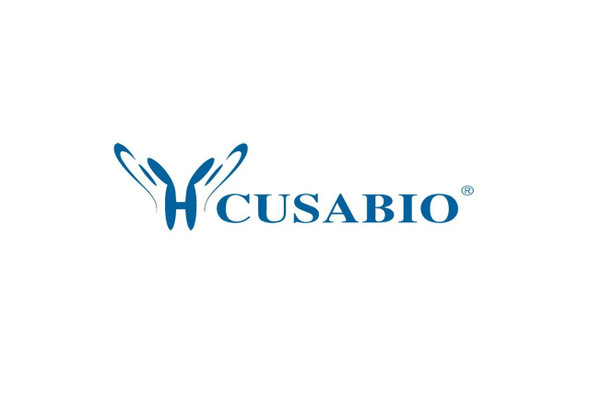Cusabio Mouse Recombinants
Recombinant Mouse Mitogen-activated protein kinase kinase kinase 1 (MAP3K1), partial | CSB-EP013417MO
- SKU:
- CSB-EP013417MO
- Availability:
- 13 - 23 Working Days
Description
Recombinant Mouse Mitogen-activated protein kinase kinase kinase 1 (MAP3K1), partial | CSB-EP013417MO | Cusabio
Alternative Name(s): MAPK/ERK kinase kinase 1 ;MEK kinase 1 ;MEKK 1
Gene Names: Map3k1
Research Areas: Others
Organism: Mus musculus (Mouse)
AA Sequence: QPYREDAEWLKGQQIGLGAFSSCYQAQDVGTGTLMAVKQVTYVRNTSSEQEEVVEALREEIRMMGHLNHPNIIRMLGATCEKSNYNLFIEWMAGGSVAHLLSKYGAFKESVVINYTEQLLRGLSYLHENQIIHRDVKGANLLIDSTGQRLRIADFGAAARLASKGTGAGEFQGQLLGTIAFMAPEVLRGQQYGRSCDVWSVGCAIIEMACAKPPWNAEKHSNHLALIFKIASATTAPSIPSHLSPGLRDVAVRCLELQPQDRPPSRELLKHPVFRTTW
Source: E.coli
Tag Info: N-terminal 6xHis-tagged
Expression Region: 1216-1493aa
Sequence Info: Partial
MW: 34.8 kDa
Purity: Greater than 90% as determined by SDS-PAGE.
Relevance: Component of a protein kinase signal transduction cascade. Activates the ERK and JNK kinase pathways by phosphorylation of MAP2K1 and MAP2K4. Activates CHUK and IKBKB, the central protein kinases of the NF-kappa-B pathway.
Reference: The DNA sequence and comparative analysis of human chromosome 5.Schmutz J., Martin J., Terry A., Couronne O., Grimwood J., Lowry S., Gordon L.A., Scott D., Xie G., Huang W., Hellsten U., Tran-Gyamfi M., She X., Prabhakar S., Aerts A., Altherr M., Bajorek E., Black S. , Branscomb E., Caoile C., Challacombe J.F., Chan Y.M., Denys M., Detter J.C., Escobar J., Flowers D., Fotopulos D., Glavina T., Gomez M., Gonzales E., Goodstein D., Grigoriev I., Groza M., Hammon N., Hawkins T., Haydu L., Israni S., Jett J., Kadner K., Kimball H., Kobayashi A., Lopez F., Lou Y., Martinez D., Medina C., Morgan J., Nandkeshwar R., Noonan J.P., Pitluck S., Pollard M., Predki P., Priest J., Ramirez L., Retterer J., Rodriguez A., Rogers S., Salamov A., Salazar A., Thayer N., Tice H., Tsai M., Ustaszewska A., Vo N., Wheeler J., Wu K., Yang J., Dickson M., Cheng J.-F., Eichler E.E., Olsen A., Pennacchio L.A., Rokhsar D.S., Richardson P., Lucas S.M., Myers R.M., Rubin E.M.Nature 431:268-274(2004)
Storage: The shelf life is related to many factors, storage state, buffer ingredients, storage temperature and the stability of the protein itself. Generally, the shelf life of liquid form is 6 months at -20?/-80?. The shelf life of lyophilized form is 12 months at -20?/-80?.
Notes: Repeated freezing and thawing is not recommended. Store working aliquots at 4? for up to one week.
Function: Component of a protein kinase signal transduction cascade
Involvement in disease: 46,XY sex reversal 6 (SRXY6)
Subcellular Location:
Protein Families: Protein kinase superfamily, STE Ser/Thr protein kinase family, MAP kinase kinase kinase subfamily
Tissue Specificity:
Paythway: MAPKsignalingpathway
Form: Liquid or Lyophilized powder
Buffer: If the delivery form is liquid, the default storage buffer is Tris/PBS-based buffer, 5%-50% glycerol. If the delivery form is lyophilized powder, the buffer before lyophilization is Tris/PBS-based buffer, 6% Trehalose, pH 8.0.
Reconstitution: We recommend that this vial be briefly centrifuged prior to opening to bring the contents to the bottom. Please reconstitute protein in deionized sterile water to a concentration of 0.1-1.0 mg/mL.We recommend to add 5-50% of glycerol (final concentration) and aliquot for long-term storage at -20?/-80?. Our default final concentration of glycerol is 50%. Customers could use it as reference.
Uniprot ID: P53349
HGNC Database Link: HGNC
UniGene Database Link: UniGene
KEGG Database Link: KEGG
STRING Database Link: STRING
OMIM Database Link: OMIM









